Wedding Diary
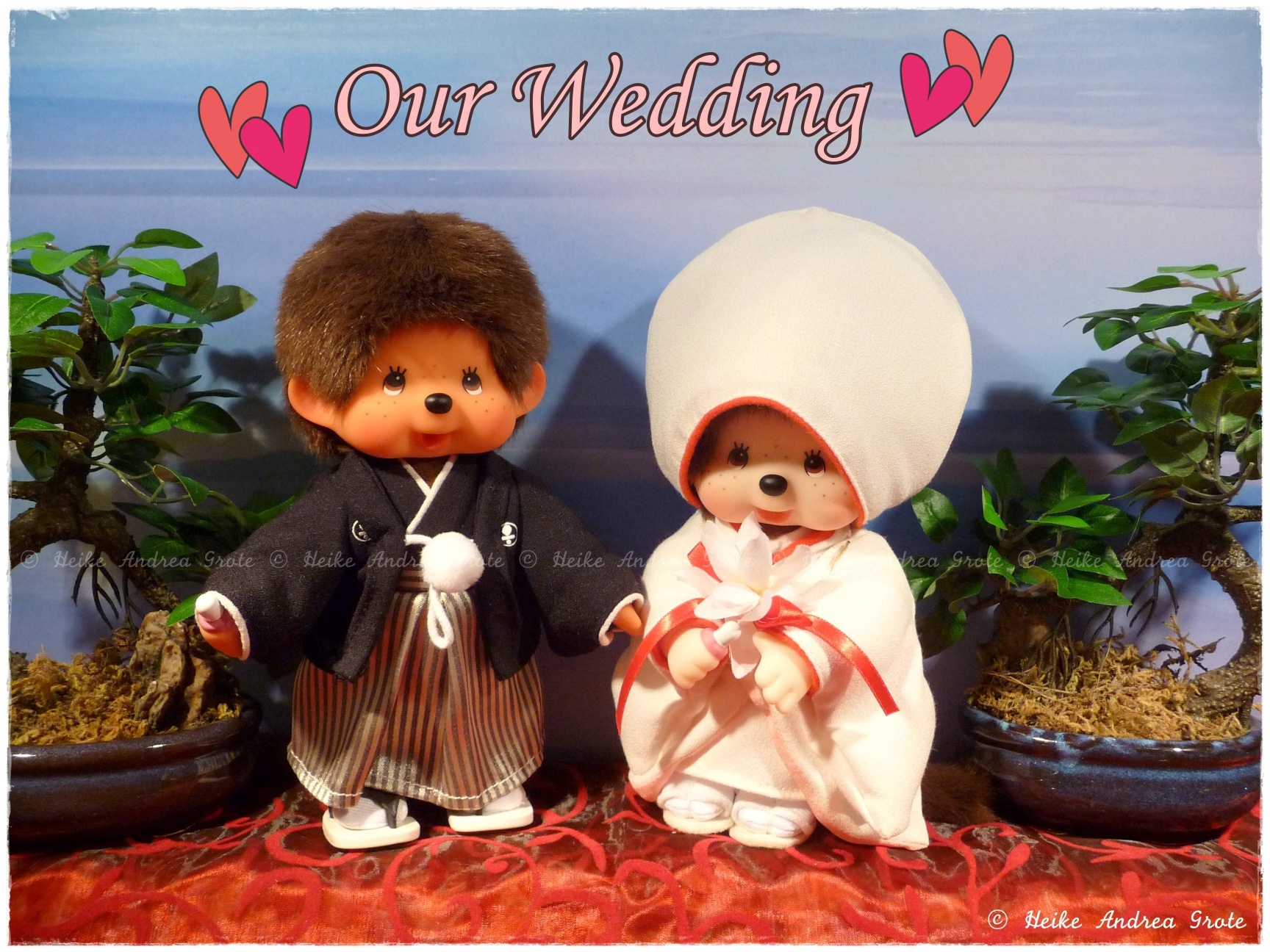
Wedding
Day
Today is the great day of the wedding of Sakiko (girl) and Hisao
(boy).
They choose to celebrate their wedding as a Japanese Shinto
wedding ceremony.
In
Japan couples are legally married once they have made the change in
status on their family registration sheets,
without the need for a ceremony. Most weddings are held either
according to Shinto traditions
or as Christian-style chapel weddings.
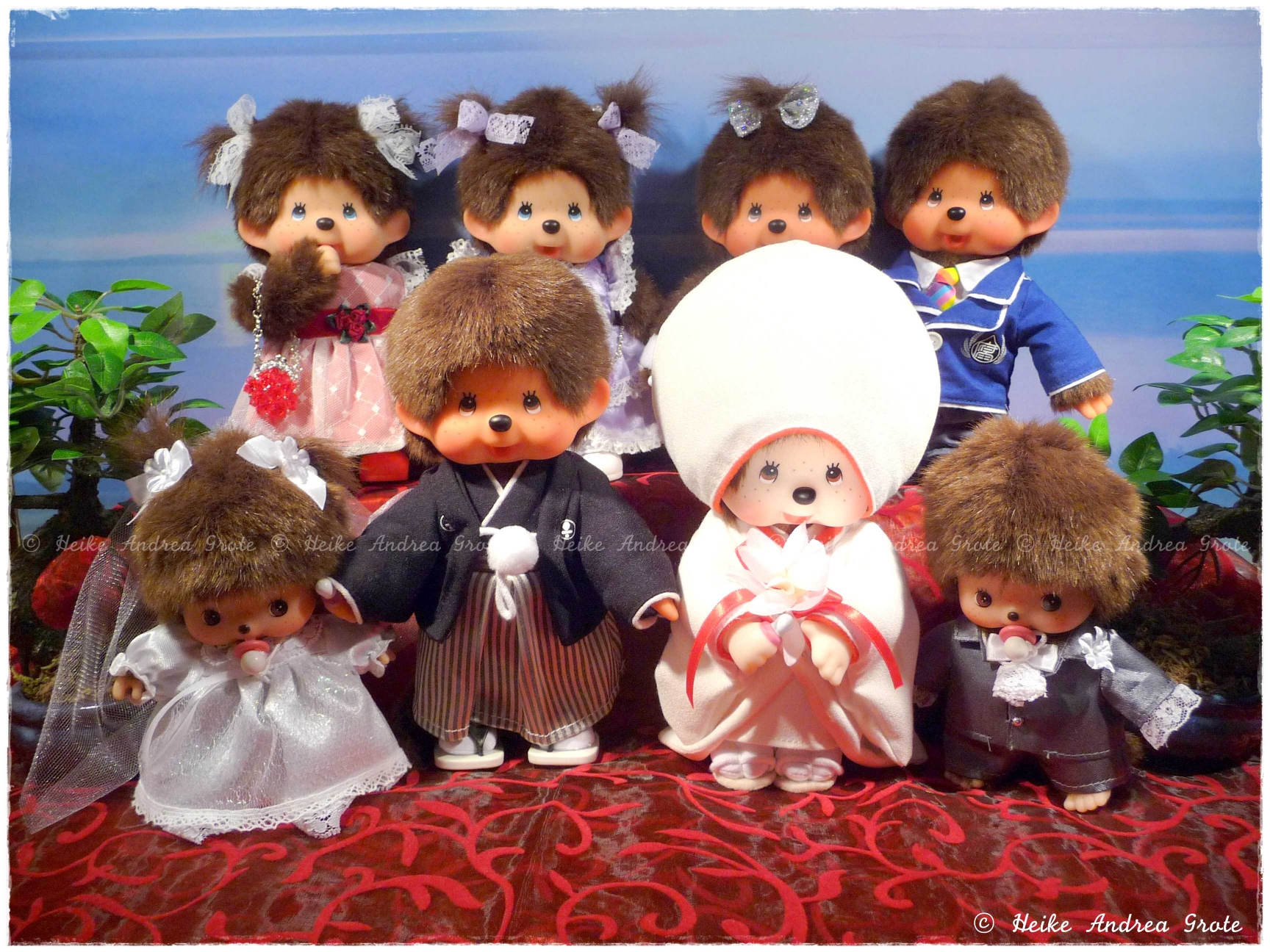
Wedding guests
Sakiko and Hisao with some of their
guests.
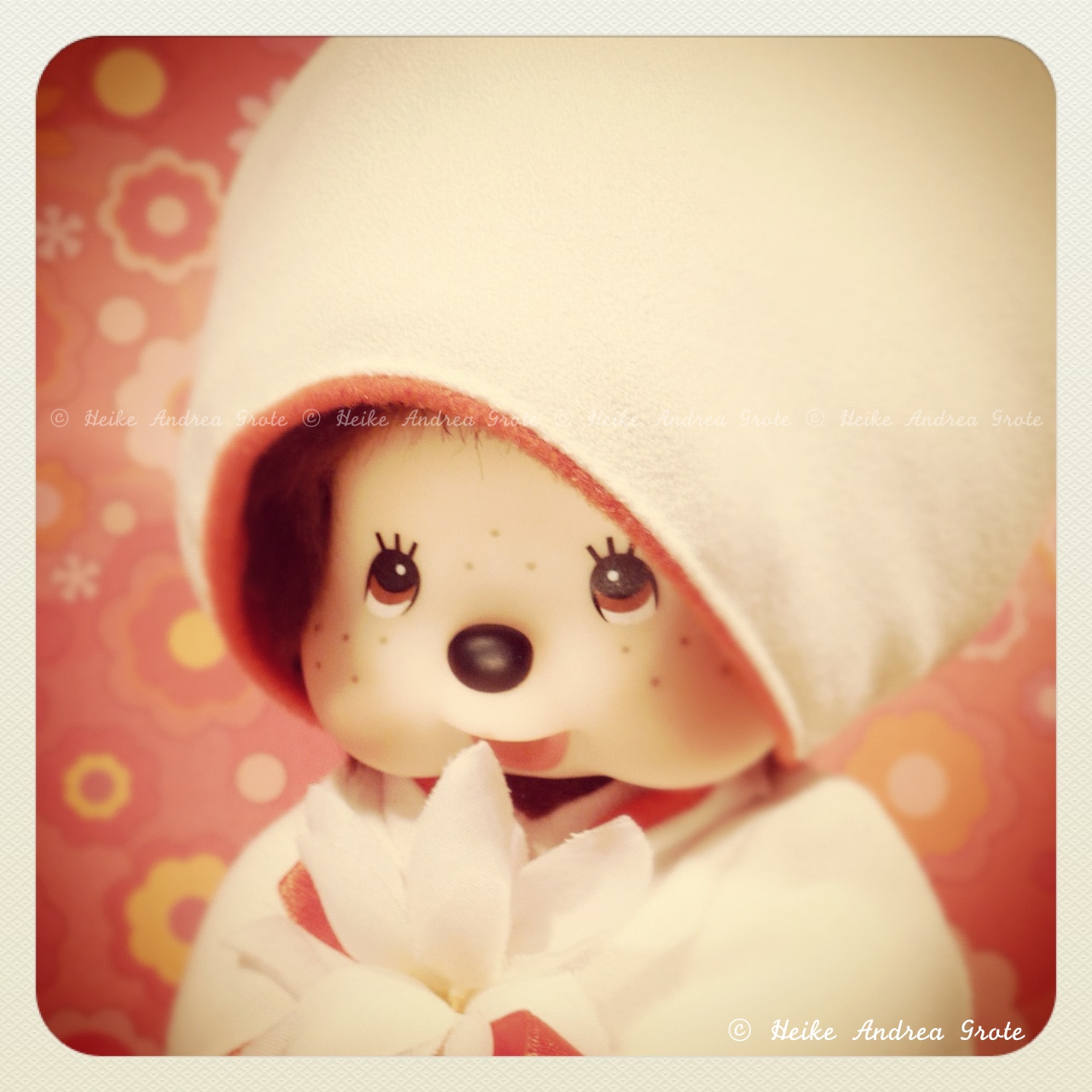
Bride Portrait
Portrait of the bride.
Sakiko wears a white hat called wataboshi.
The wataboshi (bridal kimono hood) is derived from the "katsuki",
a hood worn outdoors by married women in samurai families from the Muromachi to Momoyama periods.
From the Edo period, this custom was taken up by younger women.
Originally worn outdoors to keep away dust and prevent from the cold,
the wataboshi now is worn as the equivalent of the bridal veil in Western tradition.
Wearing the wataboshi hides the bride's face from all others except for the groom
until the end of the wedding ceremony.
The white wataboshi is worn only outside with the shiromuku,
not with colored wedding kimono or during indoor receptions.
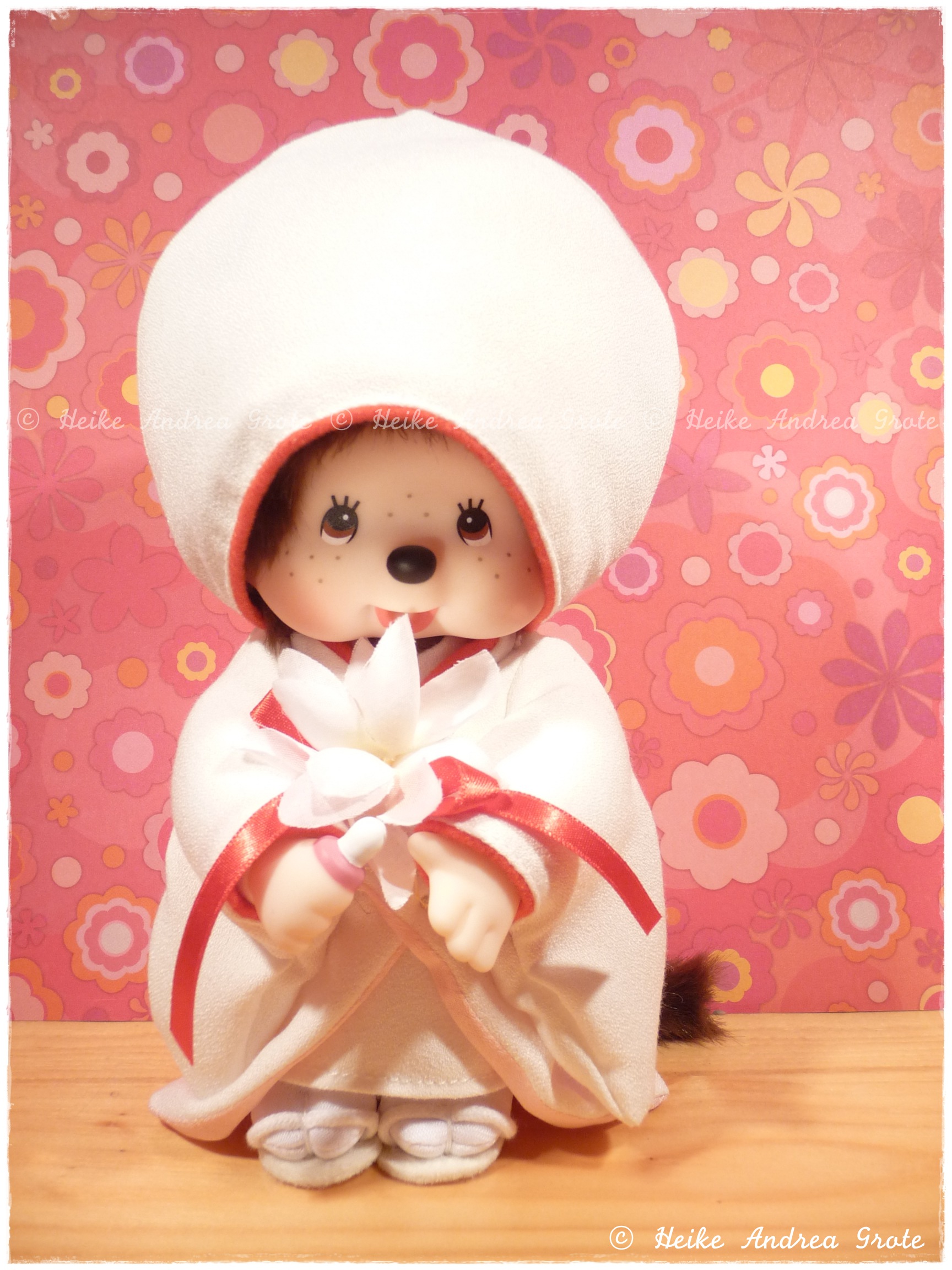
The Bride
Sakiko
in
her wedding kimono also called Shiromuku.
Shinto
brides
and grooms typically wear a kimono. The bride wears a
traditional kimono,
oftentimes combined with a wig and a hat which is called
wataboshi.
Typical colors for this kimono include red and white, colors
of Shinto purity.
Brides
at
the wedding in shrines always wear white clothes. Everything
including inner wears is pure white.
Not only their clothes, but also their accessories such as
hats, shoes and pouches are all white.
Why Japanese brides have such custom to be covered with only
white things on a day of wedding ceremony?
It’s because “white” has been regarded by Japanese people as a
symbol of pureness, cleanness or virginity.
“White” can be dyed with any color, so Shiromuku means that brides are ready to be dyed with color of groom.
“White” has also been regarded as a sacred color for many
years,
so Japanese people have believed Shiromuku
to be suitable for the wedding ceremony held at sacred
and religous places.

The Groom
Hisao in his wedding kimono also called Hakama.
In
a Japanese-styled wedding, the groom wears a Montsukihakama,
but usually referred to as just hakama (hakama generally refers to
men’s kimono,
but when spoken in the context of weddings,
it is usually understood that it is referred to as the groom’s
outfit).
The
hakama started out as semiformal attire for samurai families in the
Edo period.
During mid-Edo period, it became the most formal attire for male
commoners
and eventually in the Meiji era the hakama came to be
recognized as the most formal attire for men of all statuses.
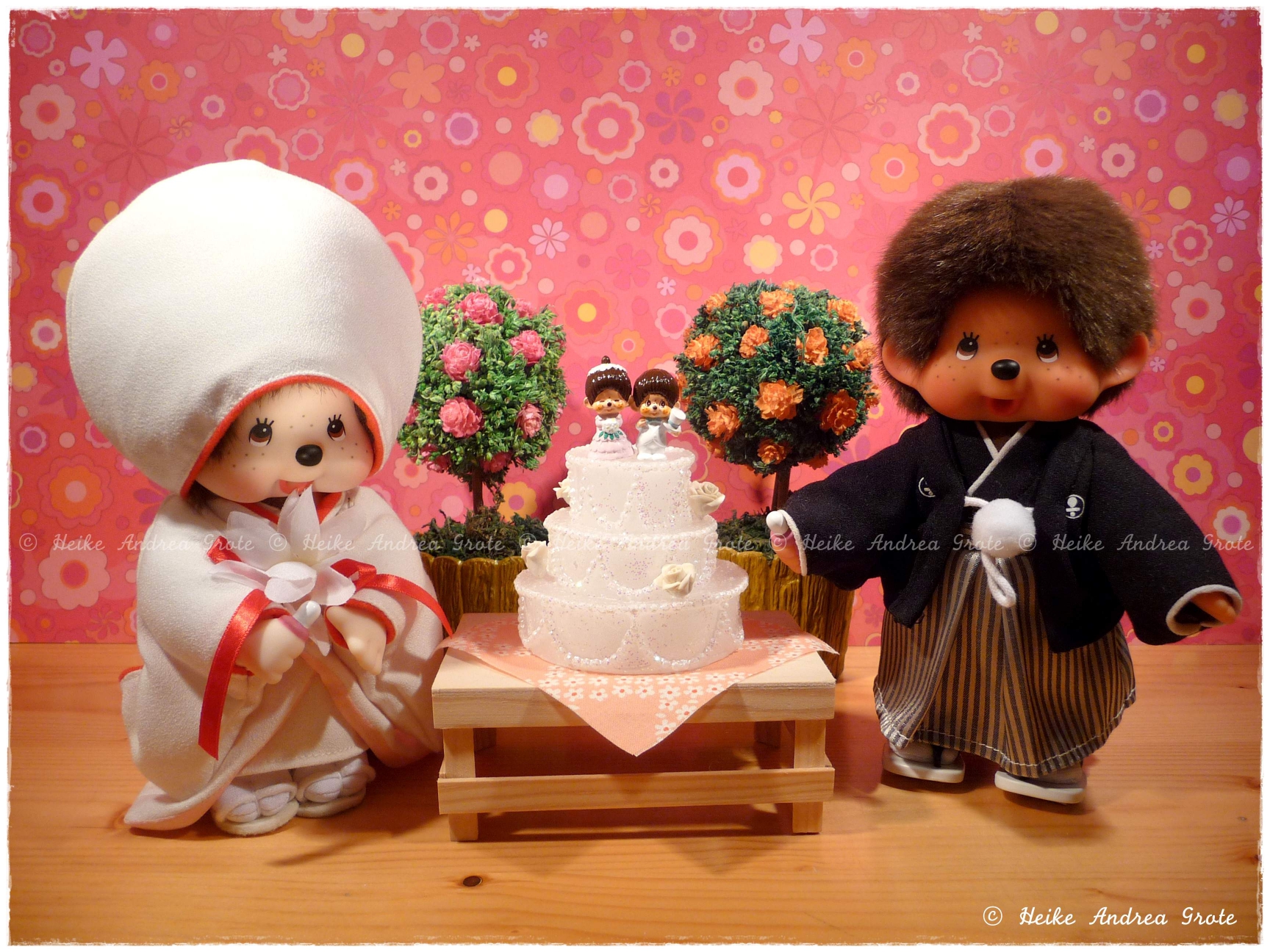
Wedding Cake
Sakiko and Hisao with their white festive wedding cake.
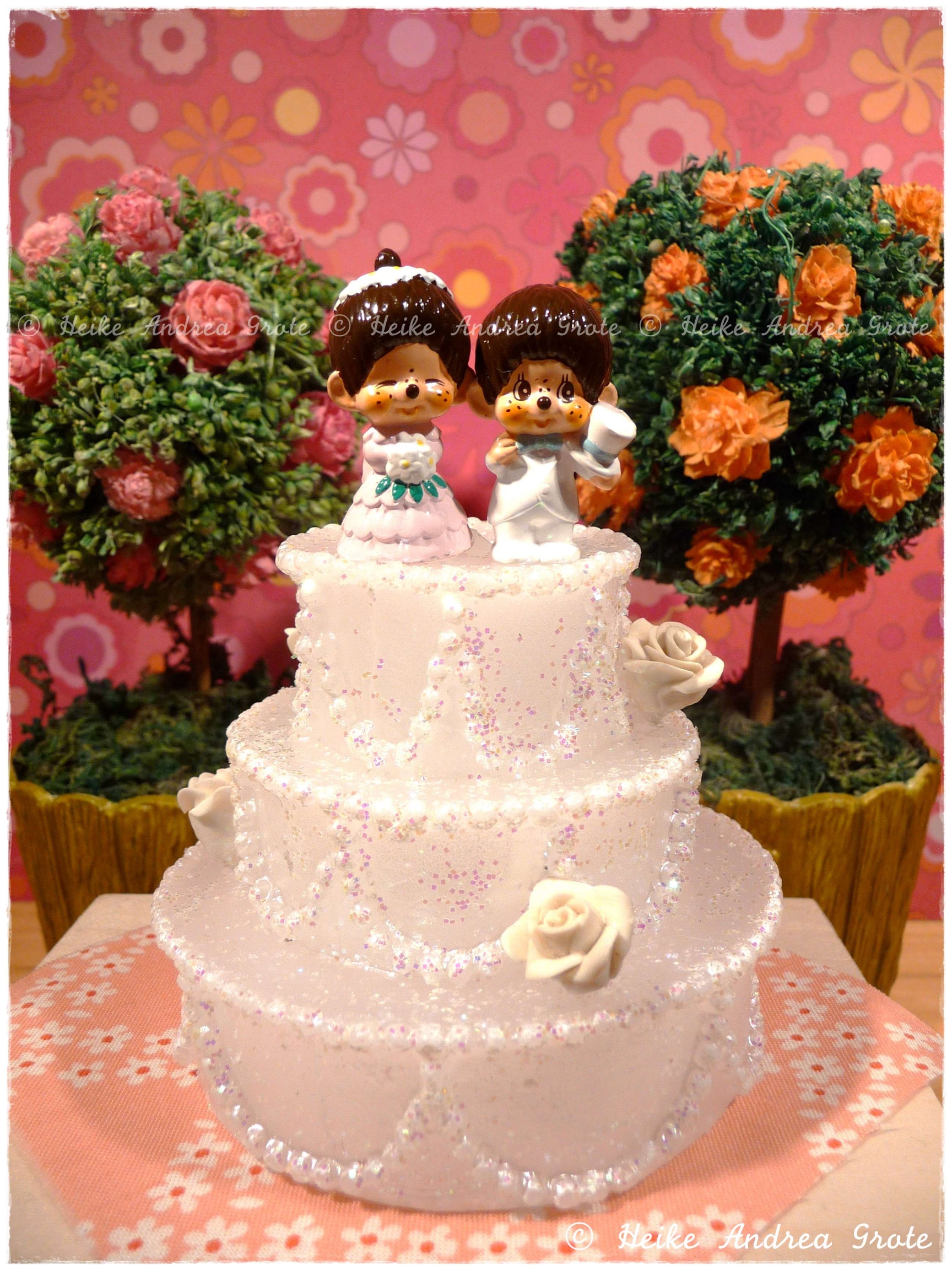
Wedding
Cake Deco
The wedding cake is decorated with a cute a Monchhichi couple.
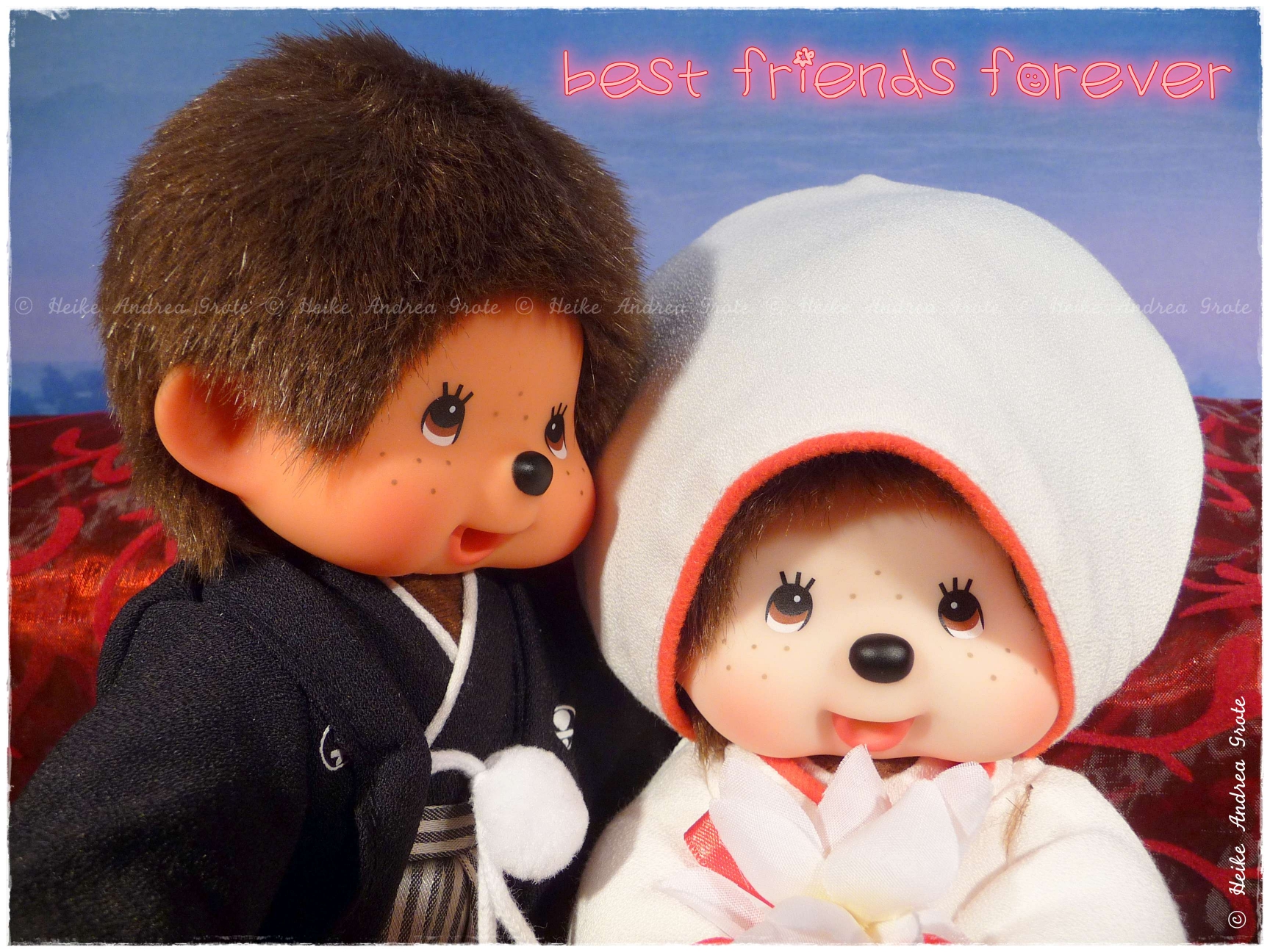
BFF
Sakiko and Hisao are best friends forever.
More about Sakiko and Hisao
can be seen at their Honeymoon Diary:
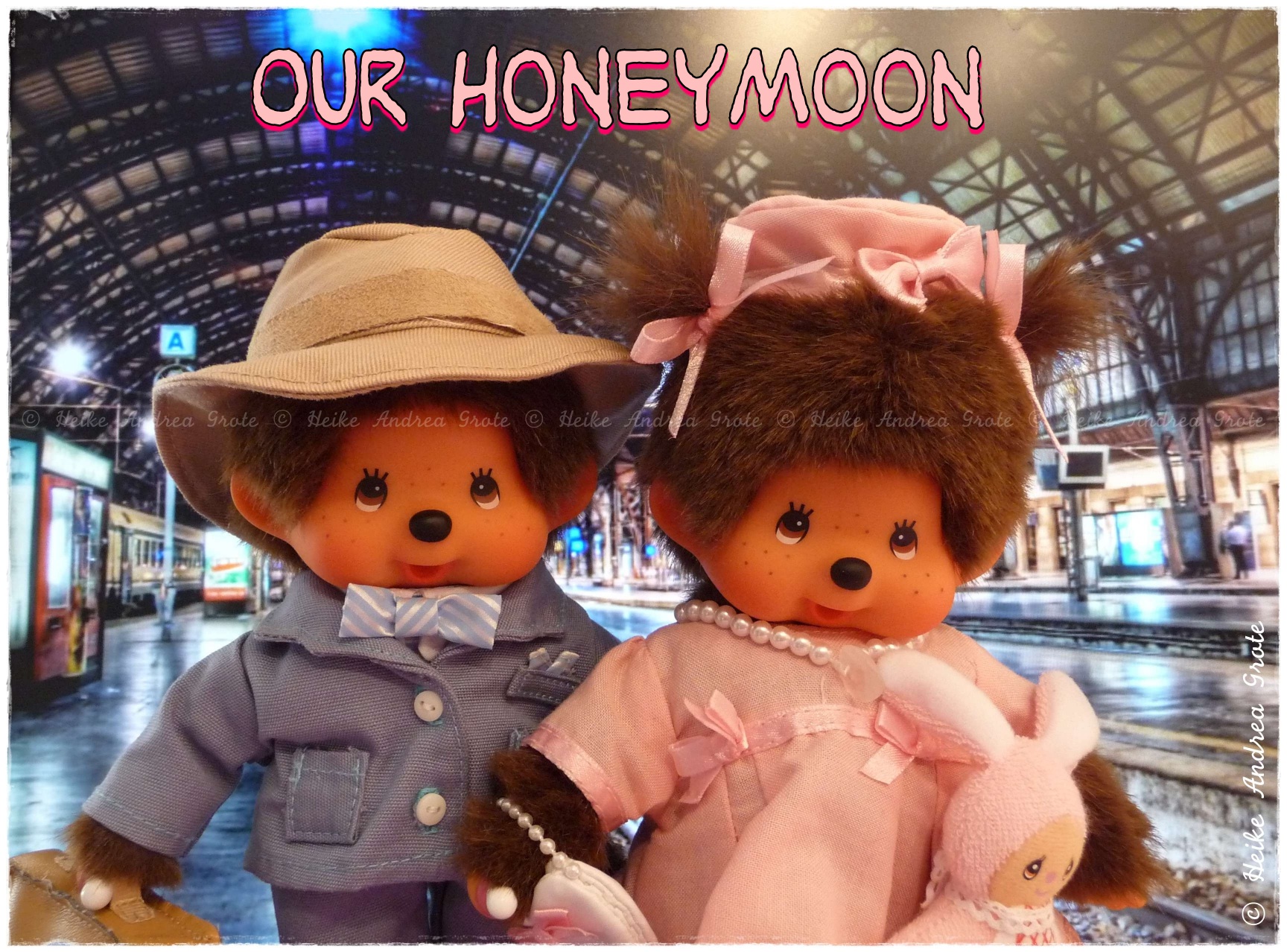
Sources for the Wedding explanation:
Wikipedia -
Shinto Wedding
Japanese Traditional Wedding Style

